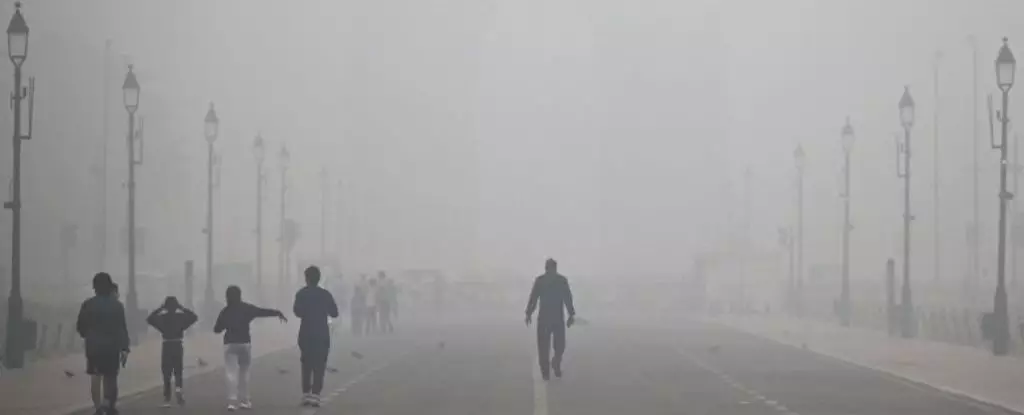In recent years, the traditional perception of lung cancer as primarily a smoker’s disease has been challenged by a disturbing trend: a worrying increase in lung cancer cases among individuals who have never smoked. This phenomenon demands urgent scrutiny because it shifts our understanding of risk factors away from personal choices and towards environmental influences. Public health experts are increasingly alarmed, recognizing that air pollution—an invisible adversary—may play a more significant role than previously thought. It is not just about dirty air making lungs gritty; it’s about how pollutants may infiltrate our DNA, setting off mutations that lead to devastating cancers.
This rising tide of non-smoker lung cancer cases forces a critical reassessment of what constitutes risk factors. Until now, smoking, asbestos, and radon exposure have dominated the conversation, but evidence indicates that air pollution, which is pervasive and largely unregulated in many parts of the world, might be a hidden insidious contributor. The implications are profound: urban environments with heavy smog, chemical load, and particulate matter could be silently fueling genetic damage, sowing the seeds for cancer in populations unaware of the danger lurking in the air they breathe every day.
Decoding the Molecular Connection: Pollution and DNA Mutations
Cutting-edge genetic research has begun to unravel how exposure to air pollution might translate into molecular mutations characteristic of lung cancer. A comprehensive international study analyzing the cancer genomes from nearly 900 individuals across four continents reveals a startling association: people exposed to higher levels of outdoor smog and soot exhibit DNA mutations similar to those seen in smokers. This research shatters the misconception that only tobacco contains carcinogens—highlighting that environmental pollutants can induce comparable genetic damage.
One of the key findings is that non-smokers living in polluted areas are disproportionately prone to mutations in critical tumor suppressor genes like TP53 and oncogenes such as EGFR. These genetic alterations are hallmarks of lung carcinogenesis, indicating that environmental mutagens in polluted air might act as carcinogens in their own right. Notably, the study identified a mutational signature called SBS4, traditionally associated with tobacco smoke, in individuals exposed to air pollution. The fact that air pollution can produce the same mutation pattern suggests a convergence point where different carcinogenic pathways meet.
Furthermore, shorter telomeres—protective end caps of chromosomes—were found to be more prevalent among those with higher pollution exposure. Shortened telomeres are linked to accelerated cellular aging and increased cancer risk, further reinforcing the hypothesis that environmental pollutants can accelerate the biological clock, promoting cancer development prematurely. The discovery that the intensity of pollution correlates directly with the number and type of mutations adds a compelling layer of evidence, emphasizing that pollution is not merely a pollutant but an active agent in genetic damage.
The Limitations and Unanswered Questions of Current Research
While these findings are groundbreaking, they are not without caveats. The study primarily relied on regional air pollution data, inferring individual exposure levels rather than measuring them directly. This method inherently introduces variability—some individuals may have been exposed more than their geographic area suggests, and others less. Additionally, the self-reported smoking habits of participants might be underestimates, blurring the lines between true non-smokers and occasional or passive smokers.
Moreover, the discovery of a novel mutational signature—SBS40a—that seems unrelated to environmental factors complicates the picture. Its cause remains unknown, pointing to underlying biological processes that are not yet understood. This underscores a broader issue: our scientific tools, though advancing rapidly, still have blind spots. There may be other environmental or biological factors that intersect in complex ways, influencing cancer risk in ways we have not yet deciphered.
Despite these limitations, the overall pattern emerging from multiple studies underscores that air pollution is more than just a respiratory irritant; it is a mutagen capable of causing genetic alterations synonymous with those caused by smoking. This recognition must propel policymakers to consider environmental pollution control as a pivotal element in cancer prevention strategies. It also raises important questions about how individual susceptibility varies—do some people’s DNA or immune system make them more vulnerable? Exploring these personalized factors will be crucial moving forward.
Implications for Public Health and Future Directions
The implications of this research extend beyond academic curiosity; they hold potential to reshape public health policies worldwide. If pollution-driven mutations are indeed causative—or at least significantly contributory—to lung cancer in non-smokers, then cleaning up the air becomes a matter of urgent health necessity. Cities plagued by smog, wildfire smoke, and industrial emissions should consider this evidence a call to action.
Furthermore, this research provides hope for developing targeted screening and prevention programs. Genetic monitoring of populations living in high-pollution areas may identify early mutational changes before tumors fully develop, offering a window for intervention. It also underscores the importance of global efforts to reduce air pollution, not just to combat climate change but as a direct means of lowering cancer incidence among vulnerable populations.
Scientific inquiry must now expand to include more diverse cohorts, considering variables like ethnicity, genetics, and socioeconomic status. Understanding why some individuals develop these mutations while others do not could unveil new preventive strategies or therapeutic targets. The discovery of unexplained mutational signatures like SBS40a hints at mysteries yet to be unraveled, which could unlock new facets of cancer biology linked to environmental exposures.
In the end, acknowledging air pollution as a potential catalyst for lung cancer in never-smokers challenges us to view our environment as an extension of our health. If we are to combat this hidden threat effectively, reducing pollution must be prioritized as a central goal—transforming urban landscapes into healthier spaces and safeguarding future generations from an invisible but deadly nemesis residing in the air we breathe.


Leave a Reply